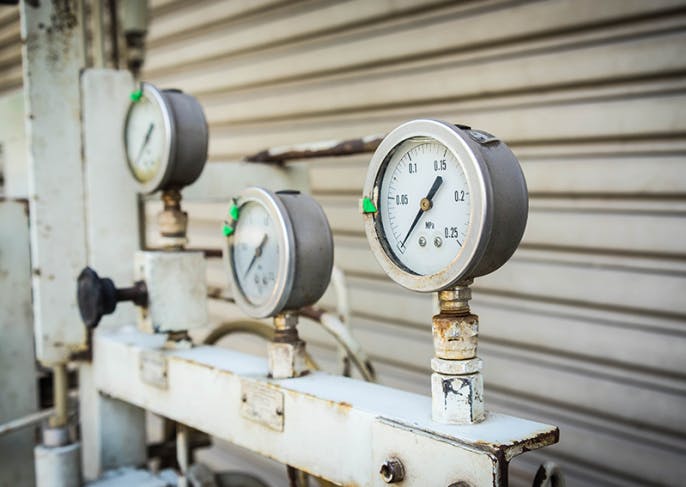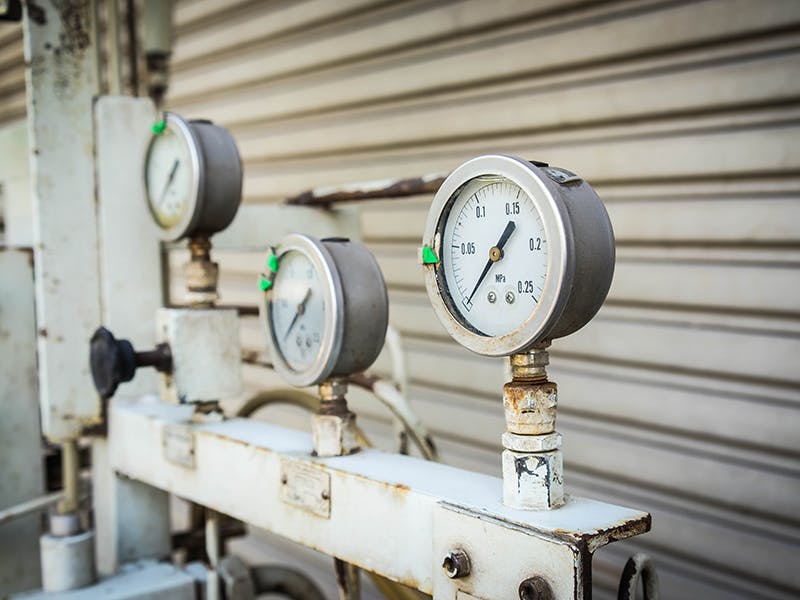Basics of Compressed Air System Design and Troubleshooting


Compressed Dry Air (CDA) systems are an essential part of the manufacturing industry. In fact, compressed air is so common, it’s frequently considered the fourth utility, after electricity, natural gas and water. Compressed air is, however, more expensive than the three utilities when calculated on a per unit energy delivered basis. For this reason, understanding the basics of using compressed air is important for manufacturers. This blog will cover CDA system design components, including air storage and piping, as well as how to troubleshoot common issues with CDA systems. The second blog in this series will examine master controls and other efficiency enhancing measures that enable users to get the best ROI from their compressed air systems.
Basic Compressed Dry Air System Components
The main components of a CDA system are the compressor, dryer, storage tank, air-main, distribution piping, connection piping and the tool connection. The recommended industry standard is to install the compressed air system in a separate, indoor room. This facilitates compliance with regulations suggesting that ambient temperatures for compressors not exceed 105° F.
To store the compressed air for optimum performance, two receivers are recommended: one is a wet tank and the other a dry tank. The wet tank provides a steady source of controlled air, additional air-cooling, and moisture separation, while the dry tank stores clean dry air for demand surges. To size the tanks, follow this formula:
Wet Tank = 1-3 gallons per cfm Dry Tank = 3-5 (5-10 conservative) gallons per cfm VSD Compressor = 1-2 gallons for wet tank, 1-3 gallons for dry tank
CDA System Piping
Loop systems are the preferred piping for CDA systems, because they reduce air travel distances and help ensure stable pressure to all points of use. The piping material should be chosen based on specific performance requirements and situational applications.
While cost and space considerations have to be taken into account when sizing the pipe, bigger is better, because with a larger diameter pipe, there is less pressure drop. Furthermore, a swan neck connection should always be used to prevent disruptions and damage due to potential moisture. A direct downward connection may be used if the possibility of condensate formation has been eliminated with 100 percent certainty.
To prevent electric shock, or worse, always follow common sense safety measures and recommendations. Using pneumatic tools can generate static electricity, so the equipment must be grounded or bonded, especially if it’s used near flammable or combustible elements, such as fuel or explosives. During maintenance work, the on switches should be locked open and tagged to prevent accidental starting. Similarly, portable electric compressors should be disconnected from the power supply before performing maintenance.
Troubleshooting Common Issues with CDA Systems
Air compressors are so common in the industry that experts estimate the systems comprise as much as 10 percent of all electricity consumption at industrial facilities. Unfortunately, the U.S. Department of Energy estimates that as much as 50 percent of this energy is wasted, even though a good system should waste 10 percent or less energy. What is the source of this waste and how can it be prevented? Here is a breakdown of where the compressed air is used in a typical CDA system:
Production ~ 50%
Leaks ~ 25-30%
Artificial Demand ~ 10-15%
Inappropriate Uses ~ 5-10%
While leaks are the most common form of waste, they are fortunately the easiest to fix after detection. There are three main detection methods:
Listen and Feel: Simple but very broad approach
Soapy Water: Reliable, requires direct physical contact
Ultrasonic: Most accurate, requires special equipment
Another large source of energy waste is “artificial demand,” which is most often caused by over-pressurizing the system. Many people think “more is better” for compressed air. This is actually not the case, because if the system is over pressurized, more air is lost through leaks and at tools and joints. The best system is precisely sized for the demand of the facility, while also accounting for future growth. Obsolete controls can also lead to excess demand when they run the compressor when it’s not needed or cause uncontrolled compressor cycling.
The final source of energy waste is when operators use compressed air inappropriately, for example for personal cooling or sweeping the work space. Obviously, based on the energy costs to operate CDA systems, neither of these activities is appropriate.
We will continue this series in a part two blog, covering how to ensure you maximize your CDA systems for maximum ROI.

